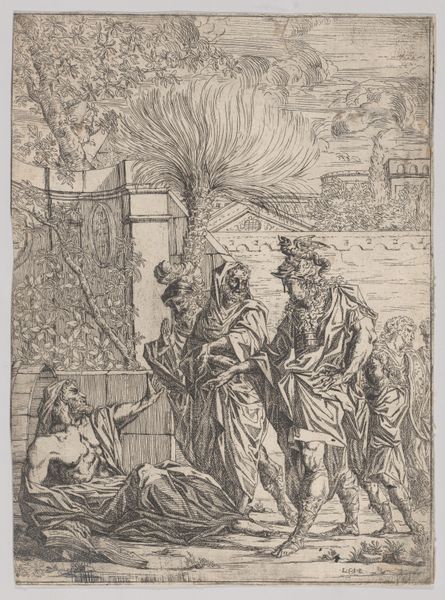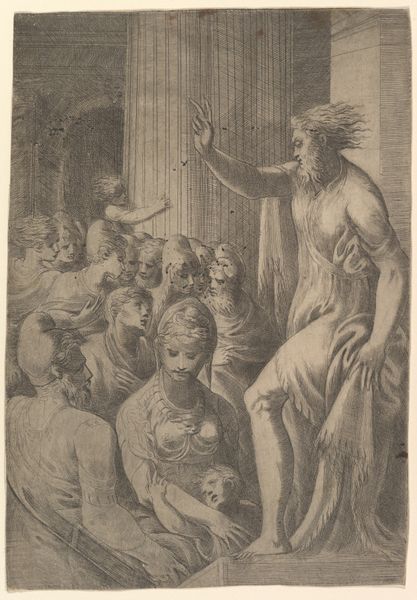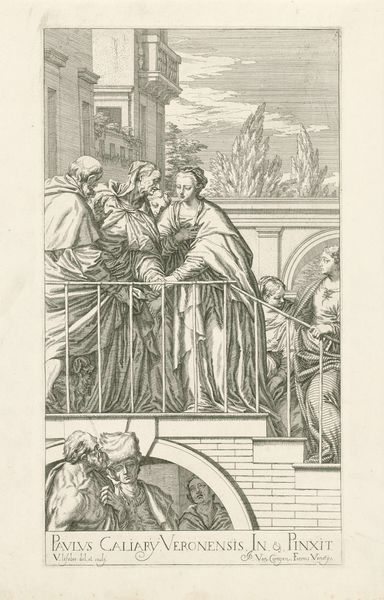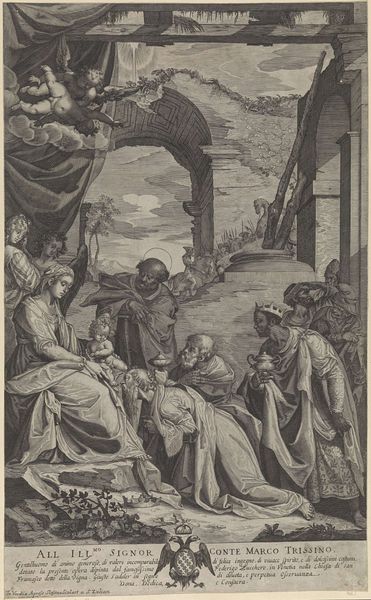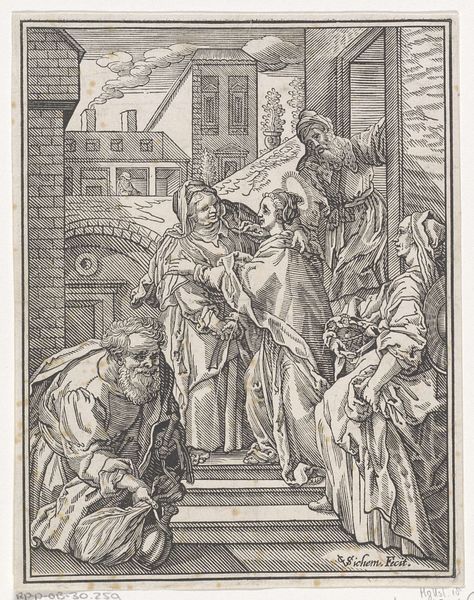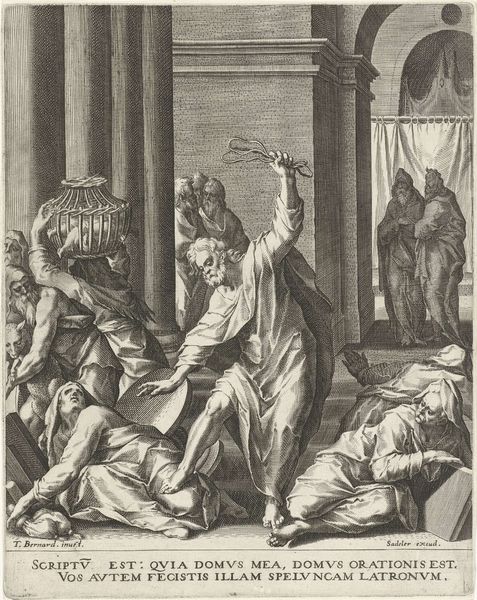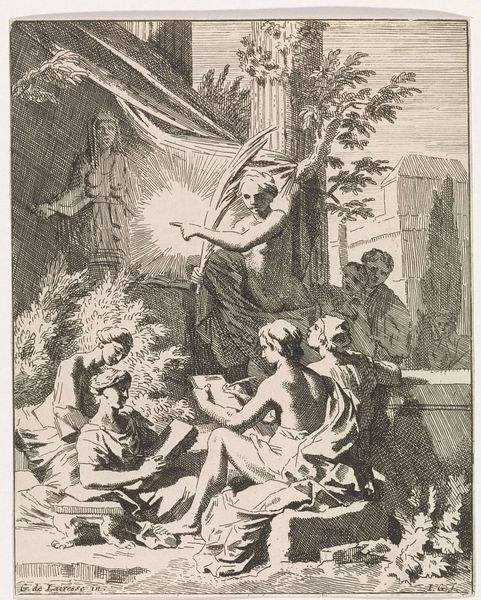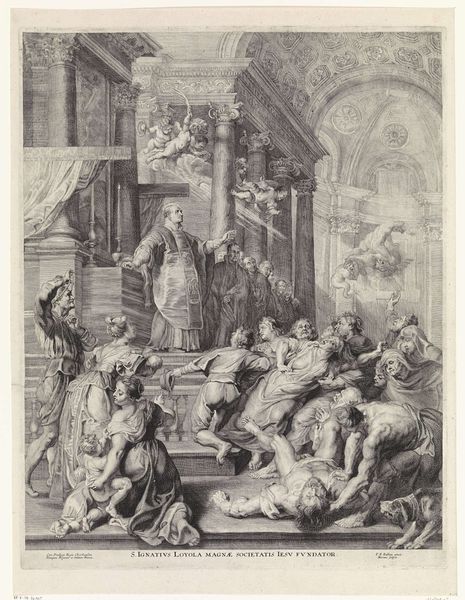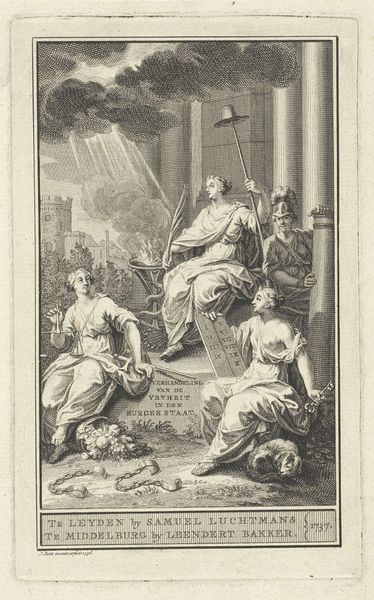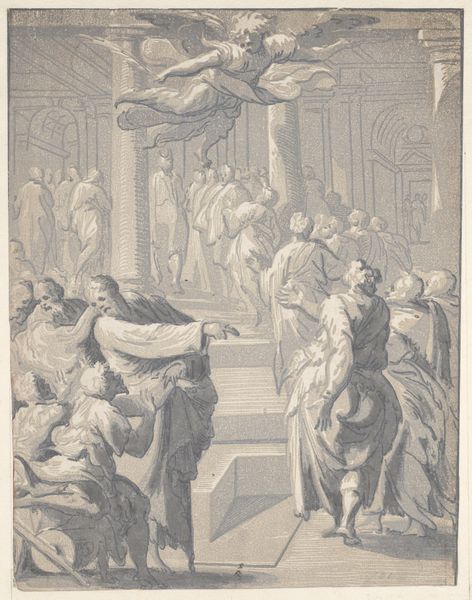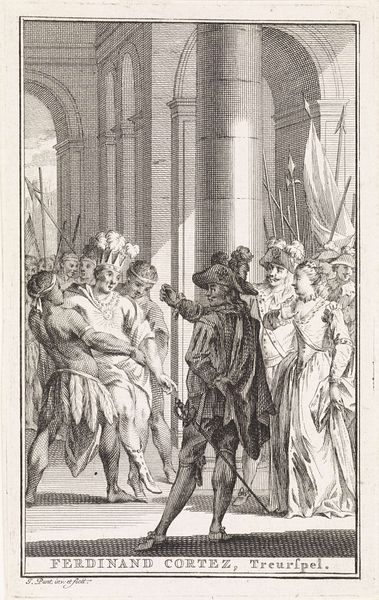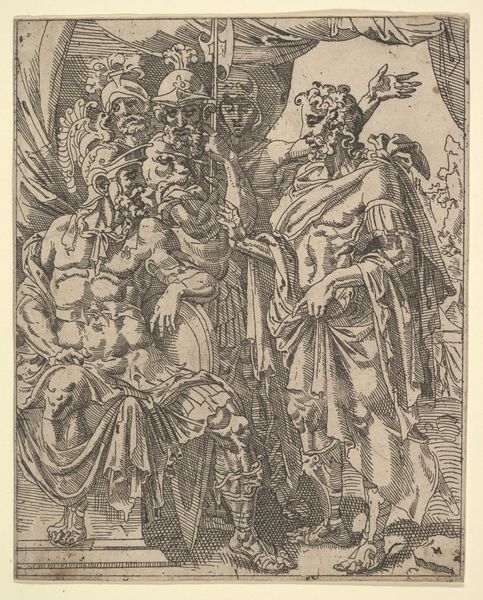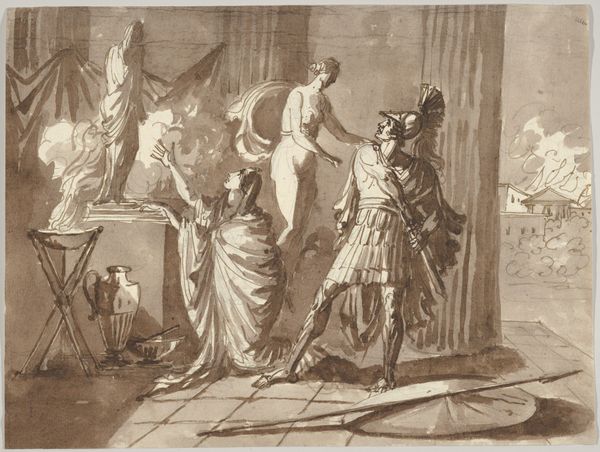
print, engraving
#
baroque
# print
#
figuration
#
history-painting
#
engraving
Dimensions: Sheet (Trimmed): 20 7/8 × 11 3/16 in. (53 × 28.4 cm)
Copyright: Public Domain
Curator: This engraving after Titian's painting "The Pesaro Madonna" in the Metropolitan Museum, dates to around 1682 and was produced by Valentin Lefebvre. The print reproduces the painting with its dramatic setting inside a classical building. Editor: My immediate impression is how intensely detailed the composition is, from the draped clothing to the architectural features and the cloud-like formations. All of this in the very linear technique of engraving. Curator: Absolutely. The cascading folds of fabric speak to the fashion for ornamentation of the time, which conveyed both status and reverence. What is more, the strong verticals provided by the columns frame and accentuate the sacra conversazione, with Mary and child as central figures, of course. Editor: The engraver must have employed remarkable labor to translate those painterly qualities. The hatch marks must have demanded such dexterity! And I notice how the stepped platform and columns seem to elevate the entire group of figures to a theatrical scale. It emphasizes power and grandeur, doesn’t it? Curator: Precisely. You can appreciate, even in the print medium, Titian’s dramatic diagonal composition, with Saint Peter acting as a bridge between earthly supplication and divine grace, mediated by Mary and her son, of course. The symbolism here relates the patron family to this salvational moment, legitimizing their earthly power through association with the sacred. Editor: What’s also quite striking is the almost tactile quality rendered on paper! One can imagine running one’s hands over the smooth marble columns, feeling the heaviness of those woolen garments and tracing the outlines of their solemn faces. Curator: Engravings such as this spread Titian’s artistry far beyond Venice and Italy. They solidified the original painting’s place in the collective consciousness of art lovers across Europe. So this reproduction becomes culturally very important in its own right. Editor: Yes, that's fascinating: what began as pigments manipulated by the hand eventually became replicated in this precise process to bring a larger audience. It makes me think about the endless loop of artistry and labor this unlocks. Curator: Yes, well said, these complex conversations in images never end, do they? Editor: No, it's an invitation to dive ever deeper.
Comments
No comments
Be the first to comment and join the conversation on the ultimate creative platform.
